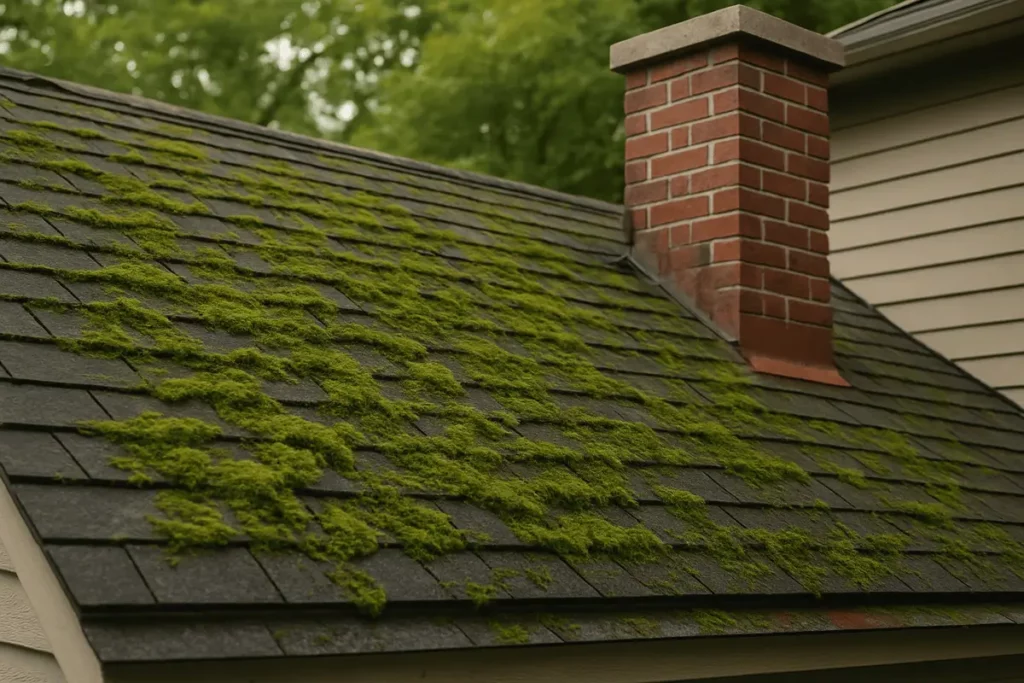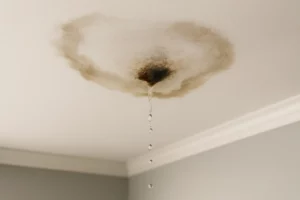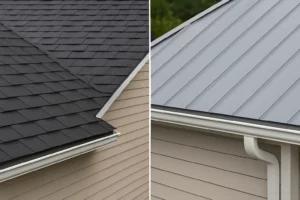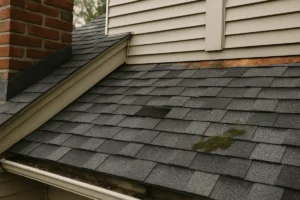If you’re a homeowner, you’ve probably worried about your roof at some point. Whether it’s a water stain on the ceiling or shingles in your yard after a storm, roofing problems have a way of sneaking up, and they usually don’t come cheap.
What makes them even more frustrating is that most roofing issues start small. A missing shingle. A loose nail. A cracked seal. And then before you know it, you’re dealing with water damage, mold, or major structural repairs.
At Ground Up Construction Management, we’ve helped dozens of homeowners across San Diego avoid exactly that. We know the most common roofing problems because we fix them every day, and we also know how to keep them from happening in the first place.
In this guide, you’ll walk away with:
- A clear understanding of the most common roofing problems
- What causes them and what they look like
- Easy steps to prevent them
- The right time to call a pro (and how to avoid getting overcharged)
Let’s dive in.
Why Roofing Problems Are So Frustrating (and Expensive)
Your roof is meant to protect everything underneath it: your walls, furniture, floors, and the people you care about. So when something goes wrong, it’s more than just a repair. It’s water leaking through drywall, insulation soaked with moisture, musty smells in the attic, and bills you didn’t plan for.
What’s worse? Most roofing issues can be prevented with regular checks and good installation. That’s why understanding the common issues is your first step toward saving money and stress.
Problem #1: Leaks and Water Damage
Leaks are the most obvious and the most feared roofing issue. They often start slow, like a drip in the attic or a damp spot on the ceiling. By the time you notice water stains inside your home, the damage has usually been happening for weeks or even months.
Common causes:
- Cracked flashing
- Broken tiles or missing shingles
- Blocked gutters
- Damaged underlayment
How to avoid it:
Have your roof inspected at least once a year, especially before the rainy season. Keep gutters clear, and fix missing or lifted shingles right away.
Problem #2: Poor Installation Practices
This one is sneaky. A roof can look fine from the street but still be hiding shortcuts or sloppy workmanship. Maybe the wrong type of nails were used. Maybe the flashing wasn’t sealed correctly. Maybe the contractor rushed through the job to cut corners.
Signs of poor installation:
- Uneven or lifted shingles
- Premature leaks (within 2–3 years of a new roof)
- Wavy lines or inconsistent overlap
How to avoid it:
Only work with licensed and experienced contractors. Ask for references, warranties, and photos of past work. At Ground Up Construction, we walk every client through the job before and after so there are no surprises.
Problem #3: Cracked Tile or Missing Shingles
California’s sun is no joke. Over time, extreme heat causes roofing materials, especially asphalt shingles, to dry out, curl, or crack. Throw in heavy winds, and shingles can start breaking off or lifting at the corners.
What this leads to:
- Exposed underlayment
- Accelerated roof aging
- Entry points for water
How to avoid it:
Walk around your home after big storms and look for shingles in your yard or out of place on the roof. A roofing expert can replace a few shingles fast and for much less than fixing water damage later.
Problem #4: Bad Flashing or Seals
Flashing is the thin metal installed around chimneys, skylights, and roof edges to keep water out. If it’s loose, rusted, or poorly sealed, it’s a direct path for leaks.
Why this happens:
- Weather damage
- Old or brittle caulking
- Improper install during roof work
How to avoid it:
Flashings should be inspected during any roof maintenance visit. Keep an eye out for exposed metal, lifted edges, or dark stains near roof openings.
We wrote a full guide on roof flashing repair cost if you want to learn more about this specific issue. (add blog link)
Problem #5: Improper Ventilation
Roof ventilation helps regulate temperature and moisture. Without it, heat and humidity build up in your attic and cause problems you can’t see right away, like mold, warped framing, or cracked shingles from below.
Symptoms of poor ventilation:
- High energy bills in summer
- Musty smells upstairs
- Ice dams (in colder areas)
- Visible mold in the attic
How to avoid it:
Make sure your attic has both intake and exhaust vents, and that they’re not blocked by insulation or debris. A professional roofer can check airflow during an inspection and recommend fixes if needed.

Problem #6: Pooling Water on Flat Roofs
Flat or low-slope roofs are common on modern homes, garages, or additions. They’re sleek, but they come with a risk: water that doesn’t drain properly can pool and cause the roofing material to fail.
What can go wrong:
- Accelerated wear
- Membrane bubbles or blisters
- Full roof collapse (in extreme cases)
How to avoid it:
Have your roof checked after major rain to see if puddles linger for more than 48 hours. Installing or improving slope systems (called “tapered insulation”) is one way we help clients reduce this risk.
Problem #7: Moss, Algae, and Organic Growth
In shady or damp areas, your roof can become a home for things you don’t want growing, like moss, lichen, or algae. Not only does it make your roof look old, but it also traps moisture and breaks down the surface.
How to spot it:
- Green or black patches
- Slippery surface
- Early shingle decay
How to avoid it:
Trim back trees that cast shade over the roof, and consider zinc or copper strips to help control growth. Avoid power-washing, it can do more harm than good.
Problem #8: Age and Material Deterioration
Even the best roofing materials have a shelf life. Asphalt shingles typically last 15–25 years. Tile and metal can last longer, but they’re not immune to wear, impact, or shifting foundations.
What aging looks like:
- Shingles losing granules
- Curling edges
- Sunlight visible in the attic
- Frequent small repairs needed
How to avoid it:
Schedule a full roof assessment if your roof is over 15 years old—even if it looks fine. Preventive maintenance or a partial replacement may save you thousands over a full replacement later.
How to Prevent These Roofing Problems Before They Start
Here’s a quick prevention checklist that we recommend to all homeowners:
- Get a professional roof inspection once a year
- Schedule repairs quickly, even for small issues
- Clean gutters and roof valleys every few months
- Trim nearby trees to reduce shade and falling debris
- Ask for photos and updates if a contractor does work while you’re not home
- Keep a roof maintenance record for resale and warranty purposes
Most of these take less than an hour, and could save you thousands.
Why Homeowners Trust Ground Up Construction for Lasting Roof Work
We’re not just another contractor with a truck and a ladder. At Ground Up Construction, we’ve built our reputation on doing things right the first time.
Here’s why our clients trust us:
- We show up on time, explain your options, and don’t push services you don’t need
- Our roofers are licensed, insured, and trained in all major roofing systems
- We use detailed inspections with photos so you know what’s happening and why
- We offer real warranties on our repair work, not just verbal guarantees
- We’ve completed projects across San Diego—from new construction to 30-year-old roof retrofits
When you work with us, you don’t just get a patch, you get a partner who helps protect your home long-term.
Talk to a Roofing Expert Before a Small Problem Grows
If your roof hasn’t been checked in over a year, or if something just doesn’t feel right, it’s time to act.
The truth is, most roofing problems can be fixed fast if caught early. But if ignored, they’ll grow into something much more expensive and disruptive.
Need help?
Contact Ground Up Construction today to book a free inspection. We’ll give you honest feedback, clear pricing, and peace of mind. No pressure, no upsell.



